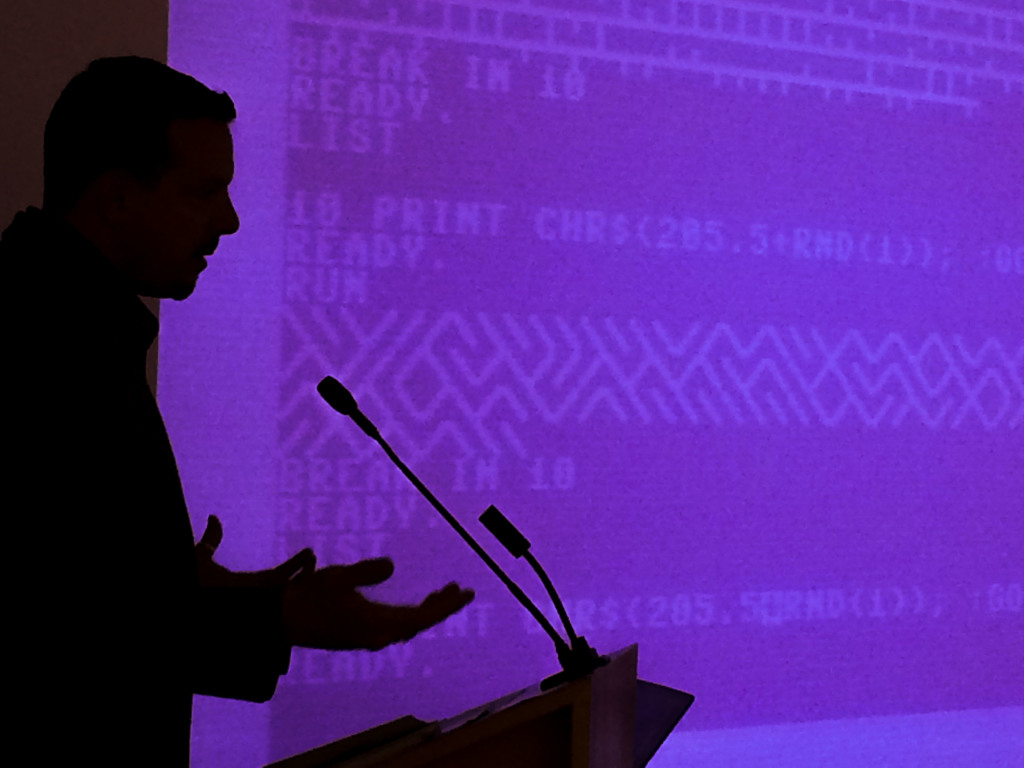Zach Whalen pointed out that it would probably be interesting to compare the reimplementations of A House of Dust that he did early this year and that I did more recently. Whalen’s work to reimplement historical systems is really excellent, by the way, and I in fact showed his animated GIF of “Kick that Habit Man” when I premiered Memory Slam, including a workalike of Gysin and Sommerville’s program and my version of the Knowles and Tenney poem, at NYU ITP’s Code Poetry Slam.
While I’m not going to go deep into code-level analysis of these – that’s a better task for some other code scholar and code warrior – I will make a few high-level points about the two versions, to at least cover some of the obvious differences.
My implementation is much more flat, for better or worse.
Flat in terms of files; all the CSS and JavaScript used by my implementation is packed into the one HTML page, so it’s easy to save it to your desktop, change the file around quickly, and see the result. However, that’s not a very Enterprise way to go about it; Whalen’s version reflects more typical programming practices in that regard, linking to a standard CSS file used throughout the site and using JavaScript stashed in .js files.
My version is also flat also in terms of appearance. While I present the plain monochrome all-caps stanzas scrolling up, Whalen gives a Janus-like look backwards to the pinfeed fanfold paper on which the original poem was published and forwards to the world of social media, via the “Share” button. This is a visual reminder of how the original prinout looked (although it did have four spaces of indentation rather than one!) and an indication of how its output can be part of today’s systems of sharing. I chose to use a proportional font because the monospace font seems too austere and too severe of a historical reminder to me, but I’m glad there is Whalen’s monospace alternative as well. That the lines in Whalen’s version appear a bit at a time is also a nice printerly touch.
It’s an empirical question as to whose version is the most easily modifiable and remixable. One can change the strings around quite easily in both versions to attain new versions of the classic program, after all the files are obtained. I would guess (and hope) that my version might have the edge in providing this sort of flexibility to those exploring the poem through programming, whether new or experienced. If so, that might make it useful in this particular regard and make up for the less historicized appearance and less sharable output.
There was another point to my implementation, which was that it was done more or less uniformly with the other three pieces included in my Memory Slam. So, a new programmer working with any one of those would be more easily able to continue to work with other programs in the set.
That’s something of a start to the discussion of these. I certainly welcome further comments and comparisons.





